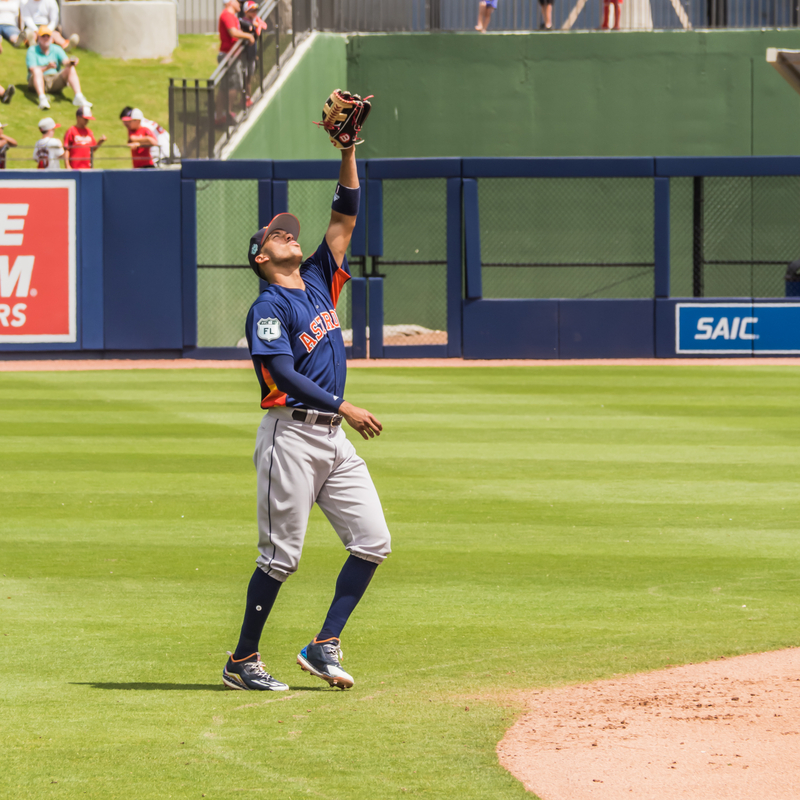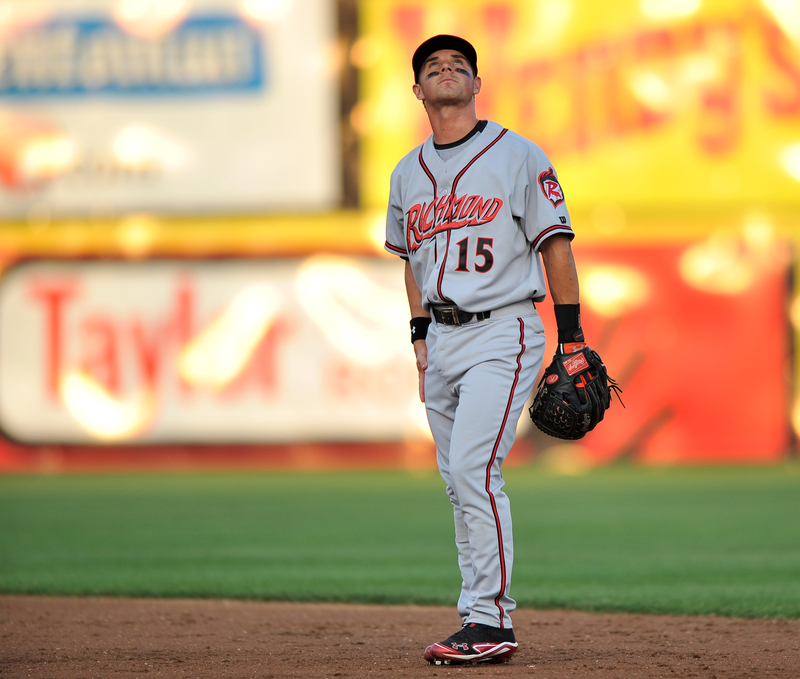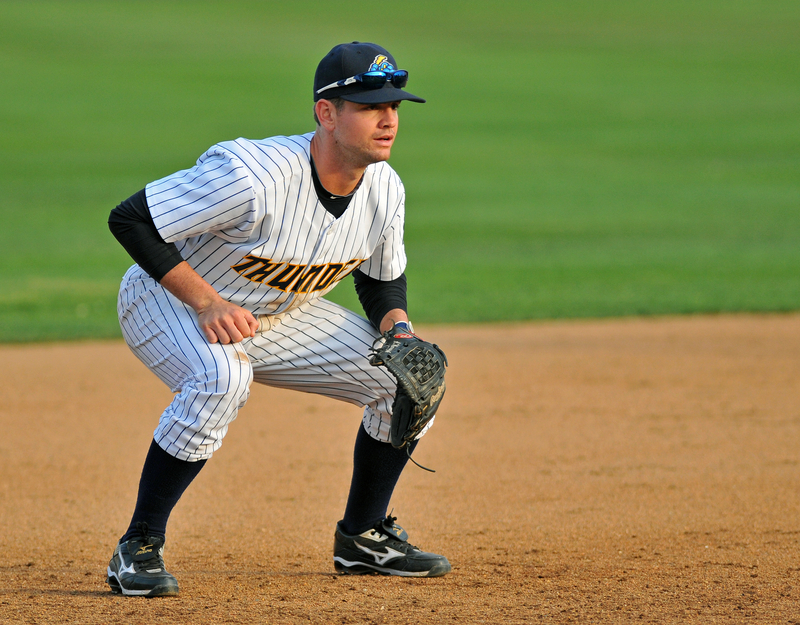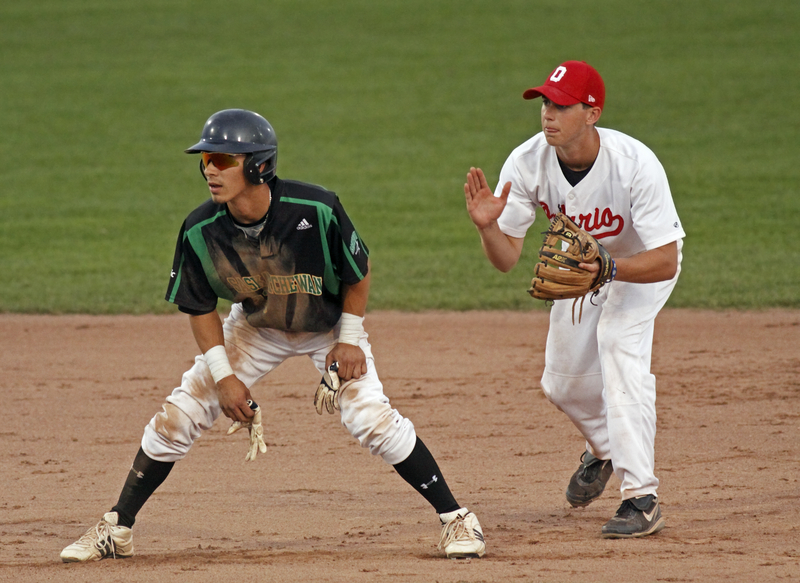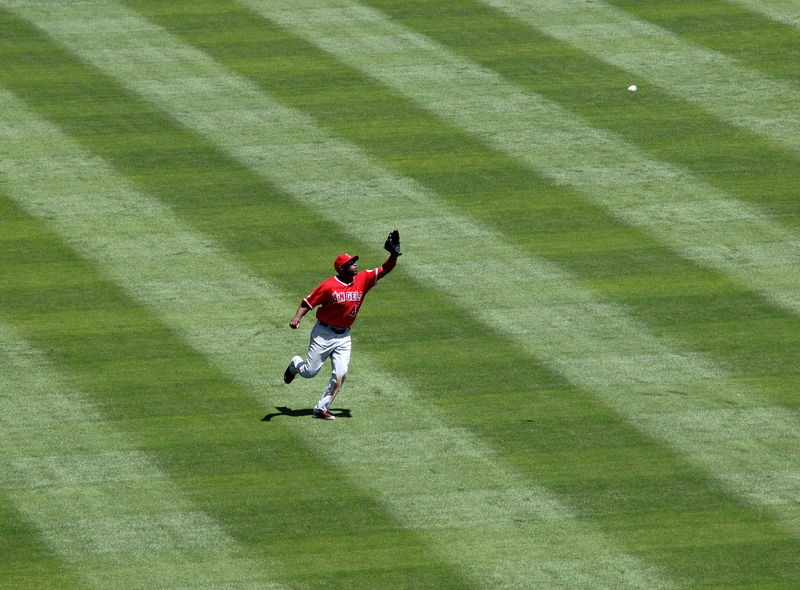Last updated on October 25th, 2023 at 04:40 pm
According to the MLB rulebook, the infield fly rule depends on a number of conditions. First and foremost, the ball has to be fair play. If it veers into foul territory, it does not count. In the particular scenario in which the rule is invoked, the ball cannot be a line drive or an attempted bunt. The next–and perhaps most important condition–is that either first and second bases have to be occupied, or first, second, and third bases must be loaded. Consequently, there must also be one out. If all of these factors line up via a fly ball hit, an umpire declares an infield fly.
Once the pop fly occurs, the umpire has a set of actions they must follow in accordance with the infield fly rule. The umpire calls an infield fly and point to the air while the ball is still airborne. This lets the baserunners know the rule is in effect. Umpires must make a judgment call on whether the ball could “be caught by an infielder with ordinary effort” and not by some arbitrary limitation such as grass or baselines. Using that judgment, umpires must rule an infield fly when an outfielder handles the play and the umpire believes an infielder should have made that play.
The outcome of calling an infield fly stays the same. Regardless of what else happens on the play, the batter is automatically out. The baserunners, guided by their coaches, then can choose whether to advance or stay. Ruling the batter out in this scenario seems odd, but when you look at the history of the rule and understand its purpose, the reasoning is much clearer.
What is the Point of the Infield Fly Rule?
The infield fly rule in baseball offers a unique set of circumstances. The rule intention is to help keep gameplay fair and even out any advantages either team may get. Without the rule in place, the defense gets an edge over the offense by unfairly causing a force play. According to the University of Pennsylvania Law Review, the rule intends “to prevent the defense for making a double play by subterfuge, at a time when the offense is helpless to prevent it, rather than by skill and speed.” Before exploring what this means more in-depth, it’s first important to understand the origins of the rule.
History of the Rule
It’s hard to believe, but baseball gloves were not present in the early days of baseball. It required a specific skill set to adequately catch the ball barehanded. Deliberately missing catches was not really much of an occurrence. That changed, however, with the onset of fielder’s gloves in the 1890s. With the advent of gloves, catch accuracy exponentially improved, fundamentally altering the game from there.
Over the course of the 1890s, rule changes were brought that would enshrine the infield fly rule into baseball. The strategic choice to miss catches in order to force outs made it an unfair advantage. This sort of field conduct was frowned upon, and baseball rule makers sought to eliminate it from the game. Today, it stands as one of the more obscure but nevertheless important rules in baseball.
Do Runners Have to Tag on an Infield Fly?
When fly balls happen, a runner has three basic choices. They can either advance before the ball is caught or dropped, tag up and advance after the ball is caught at their own risk, or remain on base. In most play scenarios, choosing between these options is fairly simple. The runner has to make the best choice possible to help their team score points. The choices are much more difficult in an infield fly situation.
When an infield fly play occurs, the baserunner has no correct course of action. Any move they make could result in an out, which they want to avoid. Logic might dictate that the safest bet is to stay on base and not risk running for the out. This is true, but doesn’t work if the infield fly call is not in place.
In the ordinary course of play, their goal is to catch a pop up or a fly ball; it does not make sense for them normally to let a ball drop. In a game where the infield fly rule does not apply, the infielder’s incentive is changes. With runners on first and second or the bases loaded, a dropped ball would mean the runners are forced to advance to the next base. The batter must go to first base, and the other runners must follow suit. When a single out is on the board, an infielder such as a shortstop can use the lack of choice the runners have to force an easy double play and end the inning. Catching the batted ball, in this scenario, would actually give them the opposite position they want to advance toward their goal of ending the inning. Leaving the ball uncaught in fair territory gives them an undue advantage.
Can an Outfielder Catch an Infield Fly?
From its name, you might assume that the infield fly rule only applies to infielders. In fact, the rule is a bit more complicated. Pitchers, catchers, and outfielders who station themselves in the infield on the play can be considered infielders for the purpose of the rule. And umpires can determine that under the conditions of this play, if they judge that a ball can have been as easily handled by an infielder, the rule stands.
One infamous example of the outfielder’s role in the infield fly happened during a National League wild card game in 2012. In Atlanta, the Braves and the St. Louis Cardinals were in a win-or-go-home game that would determine which team advanced to the NL Division Series. In that game, St. Louis Led 6-3. But in the bottom of the eighth, the Atlanta Braves had runners on first and second with one out. They were ready for a potential rally.
With the count full, Cardinals pitcher Mitchell Boggs threw a final pitch to the Braves’ Andrelton Simmon. Simmon popped the ball up to shallow left field–not exactly the infield. The ball was not caught in the outfield. However, the judgment of the umpire was applicable, and Simmon was out. Atlanta was not able to load the bases for a rally and eventually lost to St. Louis.
Conclusion on the Infield Fly Rule
The infield fly rule resolves both the runner’s dilemma and the fielder’s incentive by first calling the batter out. Then, the runners can stay at their bases and maintain their scoring potential. Everything evens out, giving the defense an out and letting baserunners remain in place.
The play must meet certain field requirements in order for an infield fly to take place. It’s among the stranger of baseball’s rules, and probably for good reason. While it’s not commonplace, it provides some protection and benefit to both fielders and runners in games both great and small.
Similar Posts
How Many Stitches are on a Baseball?
What is a Utility Player in Baseball and Softball?
How Many Innings are in Softball?
Why Do Athletes Wear Eye Black?
How to Break in a Baseball Glove
Squeeze Play and Suicide Squeeze
Greg Kristan, owner of The Stadium Reviews, LLC and TM Blast, LLC, brings his extensive experience visiting over half of the MLB ballparks, along with numerous MLS, NHL, NBA, and NFL venues, to provide in-depth coverage on the bag policy, food options, and parking. He has also been interviewed about his experiences on several sports podcasts.

